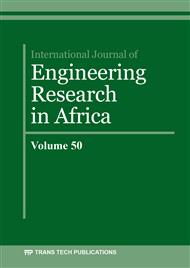p.15
p.29
p.37
p.48
p.64
p.70
p.79
p.94
p.103
Design of Fast Cycloconverter-Based Battery-Charging Circuit for High Penetration of Electric Vehicles
Abstract:
There have been growing concerns involving the penetration of Electric Vehicles (EVs) due to the time required by its battery to attain full charge. Interests in EVs had recently experienced a dramatic turn down due to mileage limitation on full battery charge amidst the cost of purchase, but most notably due to the absence of quick chargers that can keep the vehicle on the road within few minutes of arriving at the charging station. Researchers had proposed different charging schemes such as level II ac charging, dc charging, and in some cases, wireless charging schemes that later appear to be inefficient. The use of dynamic or simply road-way powered electric vehicles was also proposed in the literature. However, the proposed cycloconverter-based circuit was simulated in Simulink, and the results obtained proved that the rate of charge increased when compared to the conventional EV charging circuit. Also, the focus is on battery charging technology and battery modeling for application in an electric vehicle
Info:
Periodical:
Pages:
64-69
Citation:
Online since:
September 2020
Authors:
Keywords:
Price:
Сopyright:
© 2020 Trans Tech Publications Ltd. All Rights Reserved
Share:
Citation:


